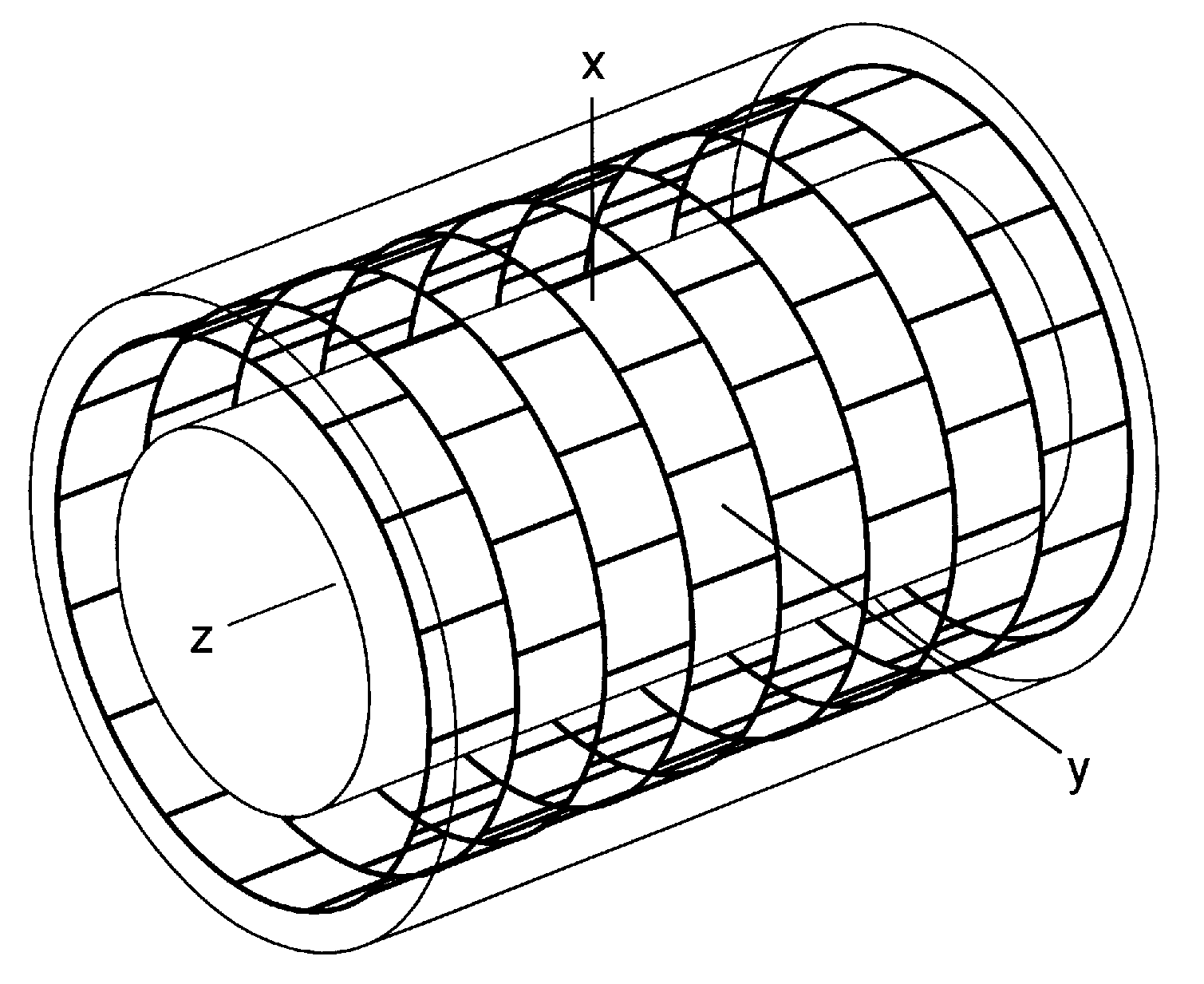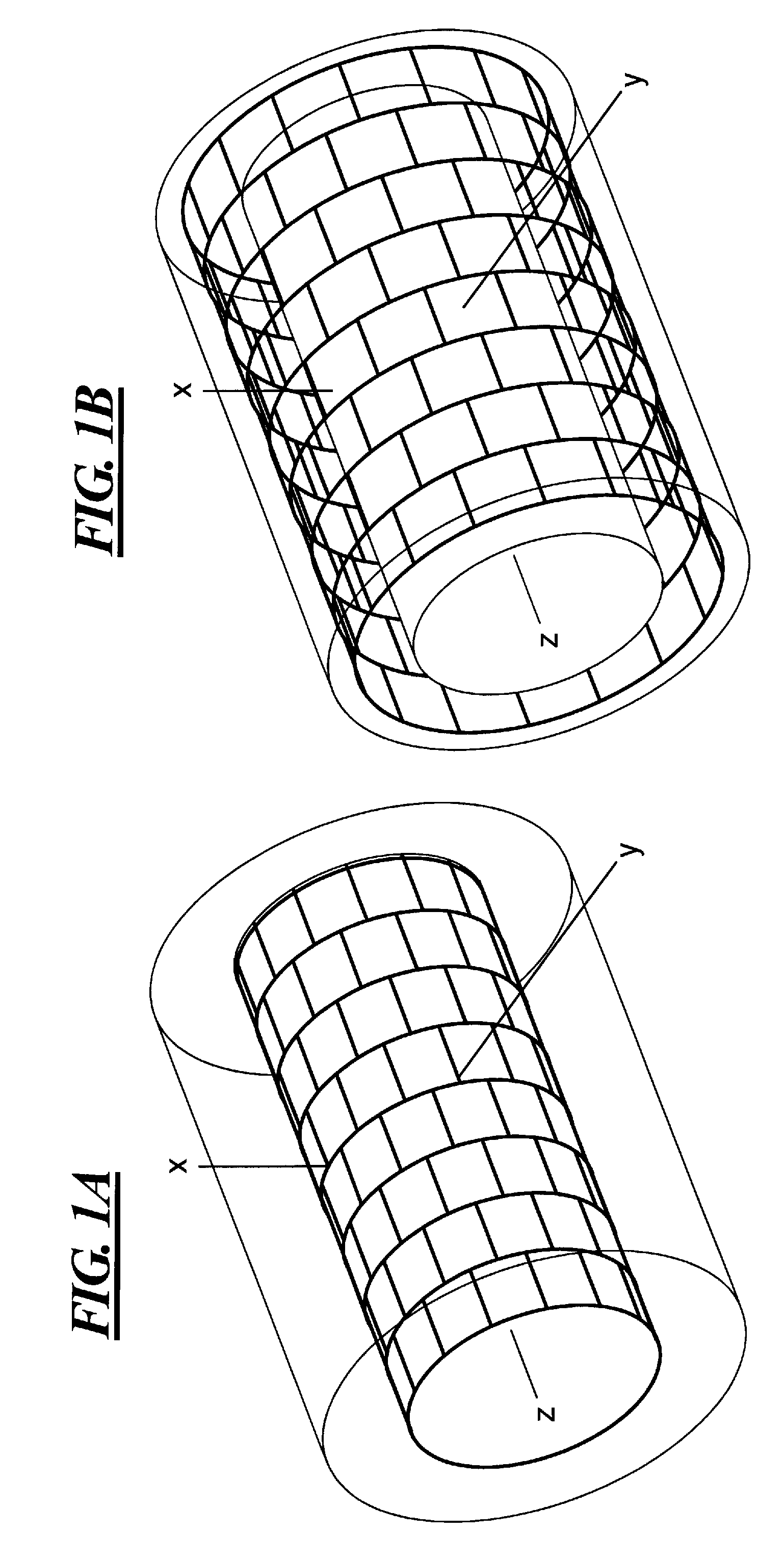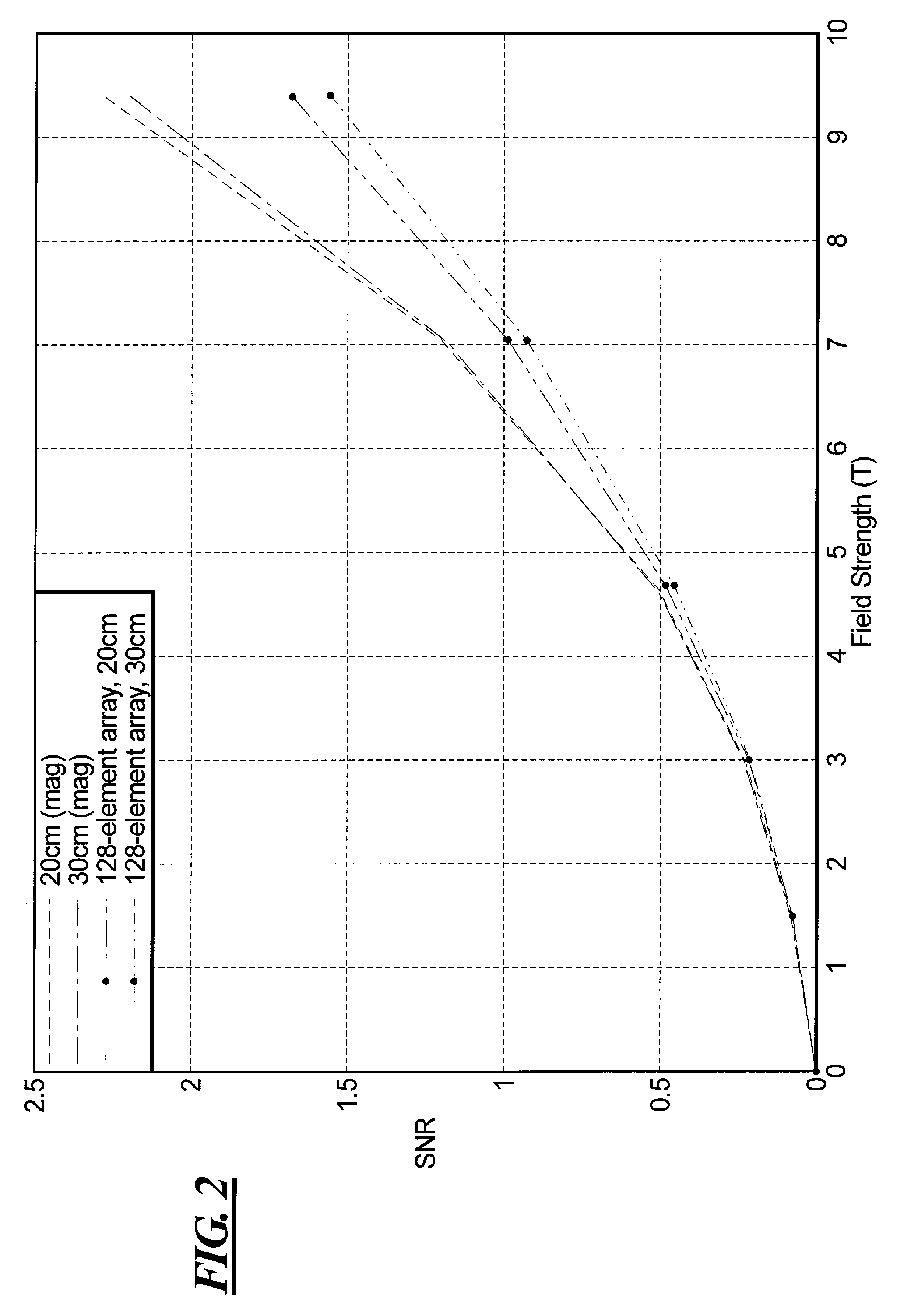Remote body arrays for high-performance magnetic resonance imaging and spectroscopy
- Summary
- Abstract
- Description
- Claims
- Application Information
AI Technical Summary
Benefits of technology
Problems solved by technology
Method used
Image
Examples
Embodiment Construction
[0018]in order to explore the behavior of SNR as a function of distance from the body, numerical simulations were performed, using the general methodology described in (Schnell W, Renz W, Vester M, Ermert H. Ultimate Signal-to-Noise Ratio of Surface and Body Antennas for Magnetic Resonance Imaging. IEEE Transactions on Antennas and Propagation 2000; 48(3): 418-428) updated as outlined in (Sodickson D K, et. al. Approaching the Ultimate Intrinsic Signal-to-Noise Ratio in a Cylindrical Geometry; Electrodynamics of Large Encircling Radiofrequency Coil Arrays. 2008; in preparation). FIG. 1A shows the geometry of the simulations, in which a dielectric cylinder (body liner) of 20 cm radius with uniform electrical permittivity and conductivity (approximating the average frequency-dependent properties of muscle tissue in this case) is surrounded by a cylindrical surface of equal or greater radius on which currents are allowed to flow. FIG. 1B shows the same geometry for an array with a radi...
PUM
 Login to View More
Login to View More Abstract
Description
Claims
Application Information
 Login to View More
Login to View More - R&D
- Intellectual Property
- Life Sciences
- Materials
- Tech Scout
- Unparalleled Data Quality
- Higher Quality Content
- 60% Fewer Hallucinations
Browse by: Latest US Patents, China's latest patents, Technical Efficacy Thesaurus, Application Domain, Technology Topic, Popular Technical Reports.
© 2025 PatSnap. All rights reserved.Legal|Privacy policy|Modern Slavery Act Transparency Statement|Sitemap|About US| Contact US: help@patsnap.com



